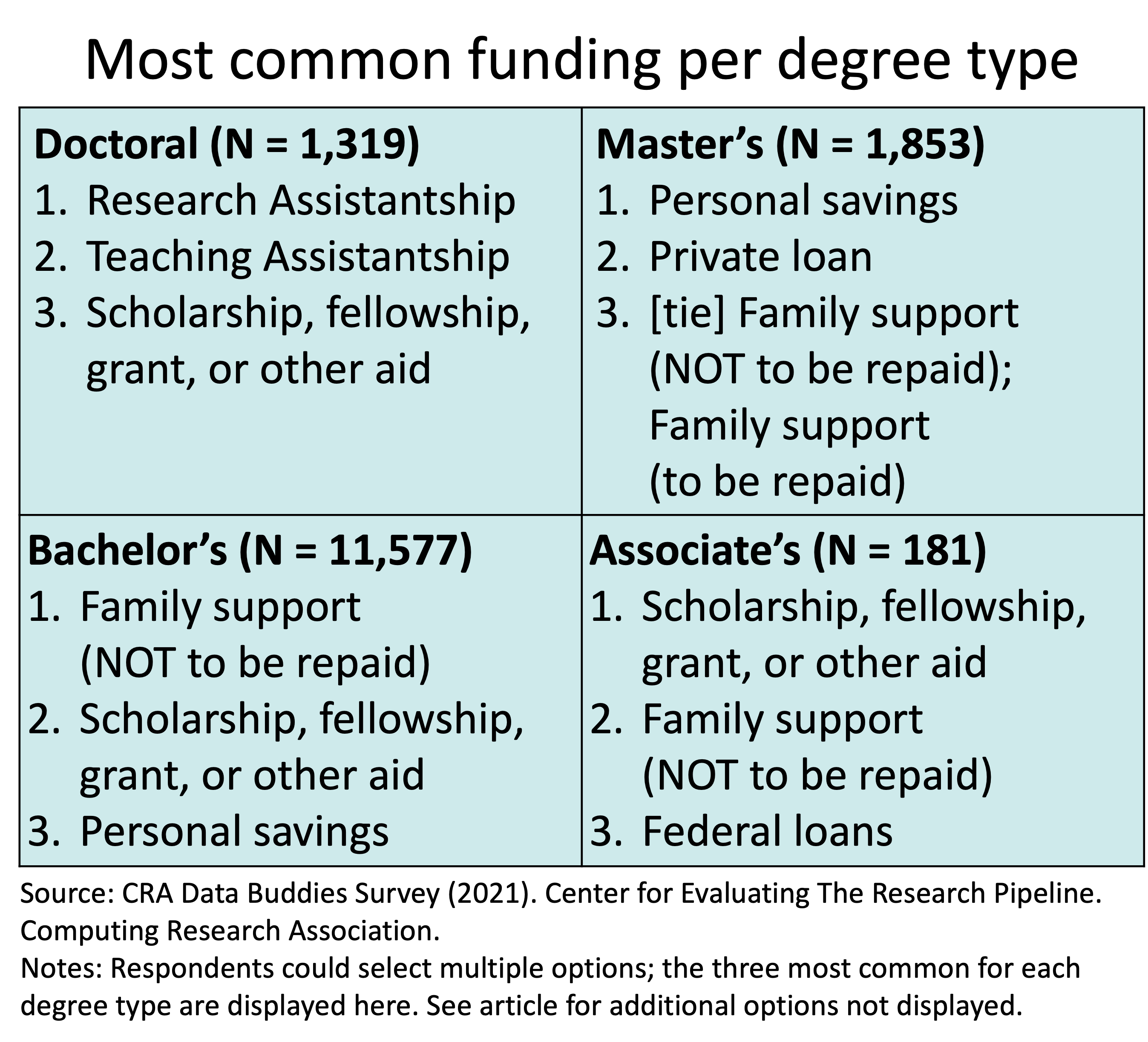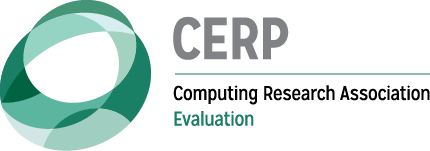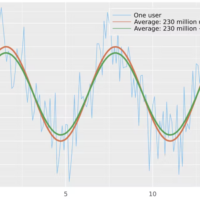How do Current Students Pay for Their Degree Programs?

As prospective students consider postsecondary degree programs, a common question that emerges is how to pay for that program. While there are many different types of funding a student could choose, what are the more common funding sources that students ultimately use? To understand the situation for current undergraduate and graduate students, CERP investigated the common ways that students at different degree types pay for their program, as reported in late 2021.
First, CERP computed the average number of reported funding sources for each degree type. Overall, students in Associate’s degree programs reported using an average of 3.5 funding sources (SD = 1.5); students in Bachelor’s degree programs reported an average of 2.7 funding sources (SD = 1.6), and students in Master’s and Doctoral degree programs each reported an average of 2.0 funding sources (SD = 1.1 and SD = 1.0, respectively). While CERP does not collect information regarding the funding amount, duration, or effort needed to procure each of these funding sources, these averages can be helpful indicators regarding the number of times a student needs to seek funding support throughout their program.
Finally, CERP calculated the three most common sources of funding for each degree type, as visualized in the graphic. This uncovered some interesting findings. At the graduate level, there are clear differences between funding support reported by students in Doctoral and Master’s degree programs, where students in Master’s degree programs report more personal sources of funding, many of which require repayment. Students at the undergraduate level (Bachelor’s and Associate’s degree programs) report more of a mix of personal and external funding sources. Overall, these results are calculated broadly across all students in a particular degree type and do not take into account any differences such as current enrollment status (full-time or part-time) or socioeconomic status, among others. Future work may include consideration of such differences as well as longitudinal comparisons by degree type to understand changes over time.
Notes:
The survey data analyzed for this infographic were collected by Center for Evaluating the Research Pipeline via The Data Buddies Project. Overall participation rates were based on 14,930 Associate’s, Bachelor’s, Master’s, or Doctoral students who provided a response to the question: “How are you paying for your program? Please select all that apply.” Response options were “Federal student loans”, “State student loans”, “Private student loans”, “Credit (e.g., personal loans, credit cards, etc.)”, “Personal savings”, “Scholarship, fellowship, grant, or other aid”, “Research assistantship”, “Teaching assistantship”, “Full-time work”, “Part-time work”, “Employer support (e.g., vocational rehabilitation, tuition benefits, etc.)”, “Military/Veterans benefits/assistance”, “Family support (e.g., spouse/partner, parents, etc.) – to be repaid”, “Family support (e.g., spouse/partner, parents, etc.) – NOT to be repaid”, and “Other”.
 This analysis is brought to you by CRA’s Center for Evaluating the Research Pipeline (CERP). CERP provides social science research and comparative evaluation for the computing community. Subscribe to the CERP newsletter here. Volunteer for Data Buddies by signing up here.
This analysis is brought to you by CRA’s Center for Evaluating the Research Pipeline (CERP). CERP provides social science research and comparative evaluation for the computing community. Subscribe to the CERP newsletter here. Volunteer for Data Buddies by signing up here.
The Data Buddies Project is currently supported through National Science Foundation (NSF) awards CNS-1840724, CNS-2036717, DUE-1821136, sub-awards and contracts, and direct CRA contributions. Previous NSF awards that supported DBS include CNS-1246649 and DUE-1431112. Any opinions, findings, and conclusions or recommendations expressed in this material are those of the author(s) and do not necessarily reflect the views of the National Science Foundation.









